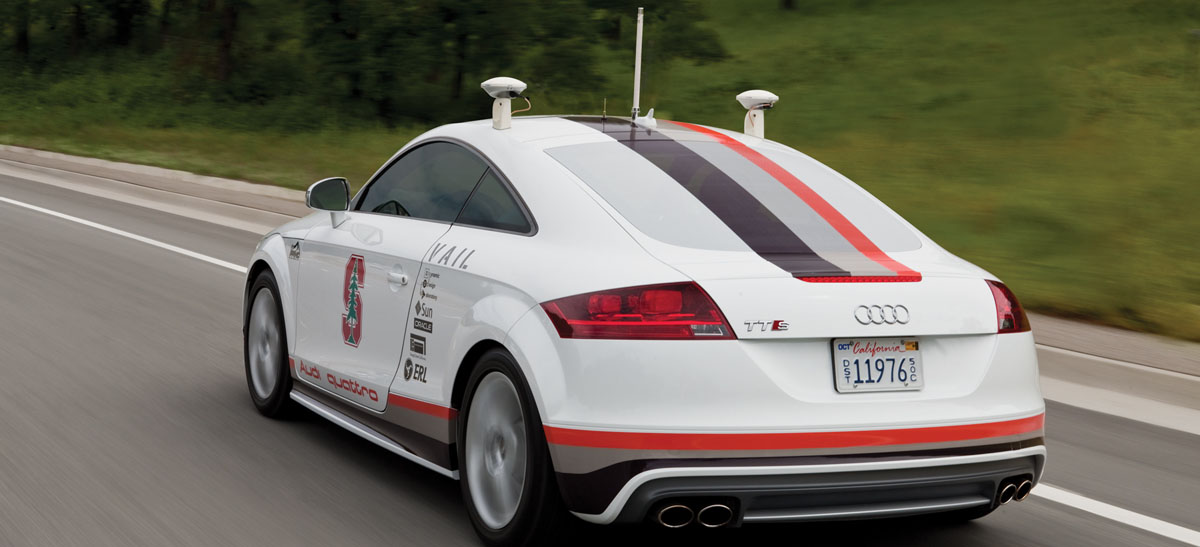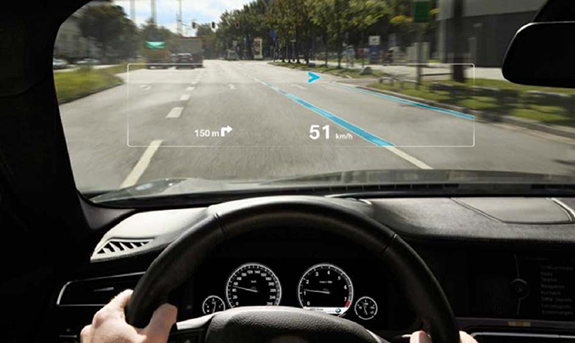
 Your Credit Estimate
Your Credit Estimate
 Your Credit
Your Credit
Your zip code helps us provide you with the most accurate vehicle pricing and vehicle availability.
We estimate your credit score to give you an idea of your monthly payments. To get an accurate payment amount, complete our credit application by clicking the Start Credit Application button below.
start credit application
Accidents happen. People make mistakes. We know this.
But, did you know that human error is the cause of 95 percent of automotive accidents?
Nearly every accident or automotive mishap is the result of human miscalculation. That's a lot of accidents, but did you also know that technology is catching up to make human error on the road a thing of the past?
It's true.
Some of the major automotive manufacturers are investing in amazing new technologies to help reduce the number of accidents on the road and make driving exponentially safer for everyone.
And it looks like the future might here sooner than later.
Thanks to technology, you can already buy a car online. Imagine buying one that can drive itself.
Although it might sound like science fiction, there are some real numbers, studies, and even prototypes to support the very real possibility of these imagined innovations becoming reality.

Consider, for example, the V2V or vehicle-to-vehicle technology, which allows cars to essentially talk to one another.
According to a 2010 study done by the National Highway Transportation Safety Association, Vehicle-to-Vehicle technology could reduce potential crashes by 79 percent.
It works by wirelessly transmitting signals between cars, broadcasting their speeds, directions, and locations.
MIT engineers are trying to create algorithms that will help a vehicle choose an evasive measure, if necessary, in order to avoid a car somehow invading the path on which it is traveling.
Researchers at Ford are also looking into V2I, Vehicle-to-Infrastructure technology, which, when combined with V2V, could reduced automotive accidents by up to 81 percent.
Imagine how much safer the roads would be if this technology actually reaches the production line?

Now, this really sounds like a summer sci-fi blockbuster, but self-driving cars might be closer to a realized concept than you think.
In a self-driving car, just as the name sounds, you can just enjoy the ride.
These cars, if manufactured, will drive themselves safely, and arguably, more efficiently than ever before.
How does it work?
Well, self-driving cars record and analyze information they have gleaned about a route using lasers, radars, and cameras. With that information, they are then able to act on and make decisions far faster than a human ever could.
Google engineers have already tested these cars on more than 200,000 miles of roadways. Given the faster processing speeds of self-driving cars compared to humans, it's easy to understand why these cars are safer than current car models.
But, they are also more efficient when it comes to traffic.
Self-driving cars are capable of platooning, which means driving close to each other, almost forming one unit or platoon. This is possible because self-driving cars would communicate with each other and are immune to the distractions plaguing human drivers.
General Motors has begun testing its own self-driving cars, leading industry experts to predict that self-driving cars might be on the road within the next ten years.

Not to be outdone, BMW is perfecting a design for Augmented Reality (AR) dashboards. Augmented Reality dashboards are able to read a car's environment and present information about it to the driver.
With Augmented Reality technology, the car evaluates its surroundings and makes suggestions to the driver on the best possible response or course of action.
Even cooler, Augmented Reality is being researched for passengers.
Toyota is trying to create a system for passengers to closely examine objects outside of the car by selecting them and zooming in via a touchscreen window, even allowing them to assess the distance between the car and that object.
And, Augmented Reality glasses for automotive technicians are in the works, thanks to BMW. With these glasses, automotive technicians can instantly see what needs to be repaired and/or replaced in a vehicle.
It's like having x-ray vision!
As cars evolve, they tend to offer more safety features, often in the form of additional airbags.
Airbags are considered a function of passive safety, meaning they work after something has happened. They are reactive. Mercedes wants to make them active, and is working on designs for airbags which will assist the car in active braking.
The idea is that the airbags, situated beneath the car, will prevent a crash from occurring by slowing down the car and enhancing its ability to stop. In this situation, the airbags will also raise the car by eight centimeters, which alleviates the sinking that happens when a car is forced to brake hard.
Since airbag technology already exists, it's not hard to envision these airbags appearing on new cars very soon.
Volvo is using already-existing technology from hybrid vehicles to imagine body panels that are capable of storing energy. Nine European automotive manufacturers are developing body panels able to store energy and charge faster compared to today's batteries.
This is excellent news because the batteries powering our current hybrids take up tons of space and significantly add to a car's overall weight.
Even lithium-ion batteries bulk up hybrids.
The panels would allow for downsized batteries and would act similar to batteries by charging through regenerative braking and whenever plugged into a power source.
Toyota wants to create panels that store energy by first capturing solar energy.
Basically, the goal is to take hybrid technology and improve upon it so that Exxon Mobil's prediction, that by 2040 half of all new cars will be hybrids, comes true…and maybe even sooner.

Although Toyota looks skyward to harness the sun's energy and create solar power in the body panels of its imagined future vehicles, it has also started looking at other sources of renewable energy.
In a stunning new twist on hydrogen fuel cell technology, Toyota has uncovered a way to harness the hydrogen found in water.
Yes, water. The most abundant element, hydrogen is found everywhere and in practically everything.
Breaking apart water molecules through electrolysis makes it possible to capture the hydrogen in water and use that hydrogen to then power a hybrid vehicle. In this case, the Toyota Mirai, mirai meaning “the future” in Japanese.
Encouraging news all around as automotive technology keeps pace with our evolving world.